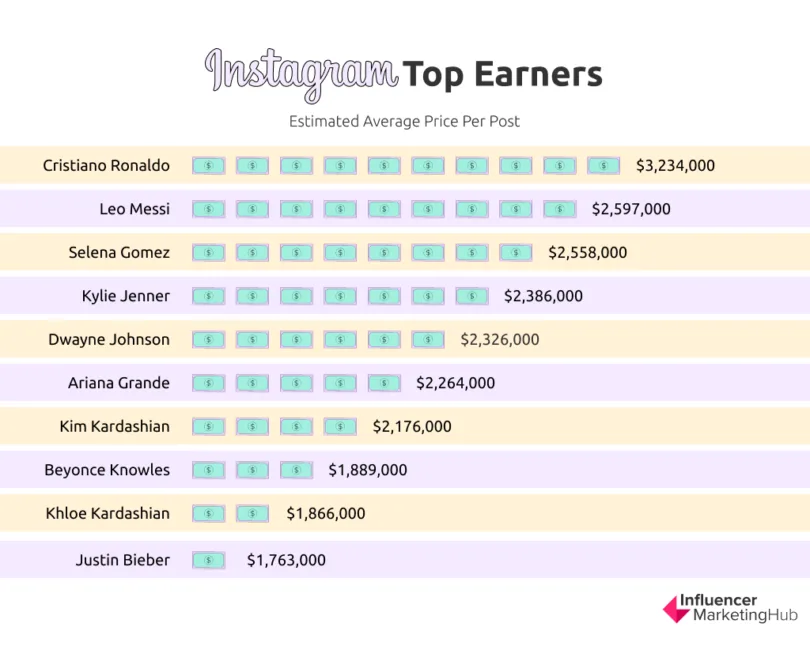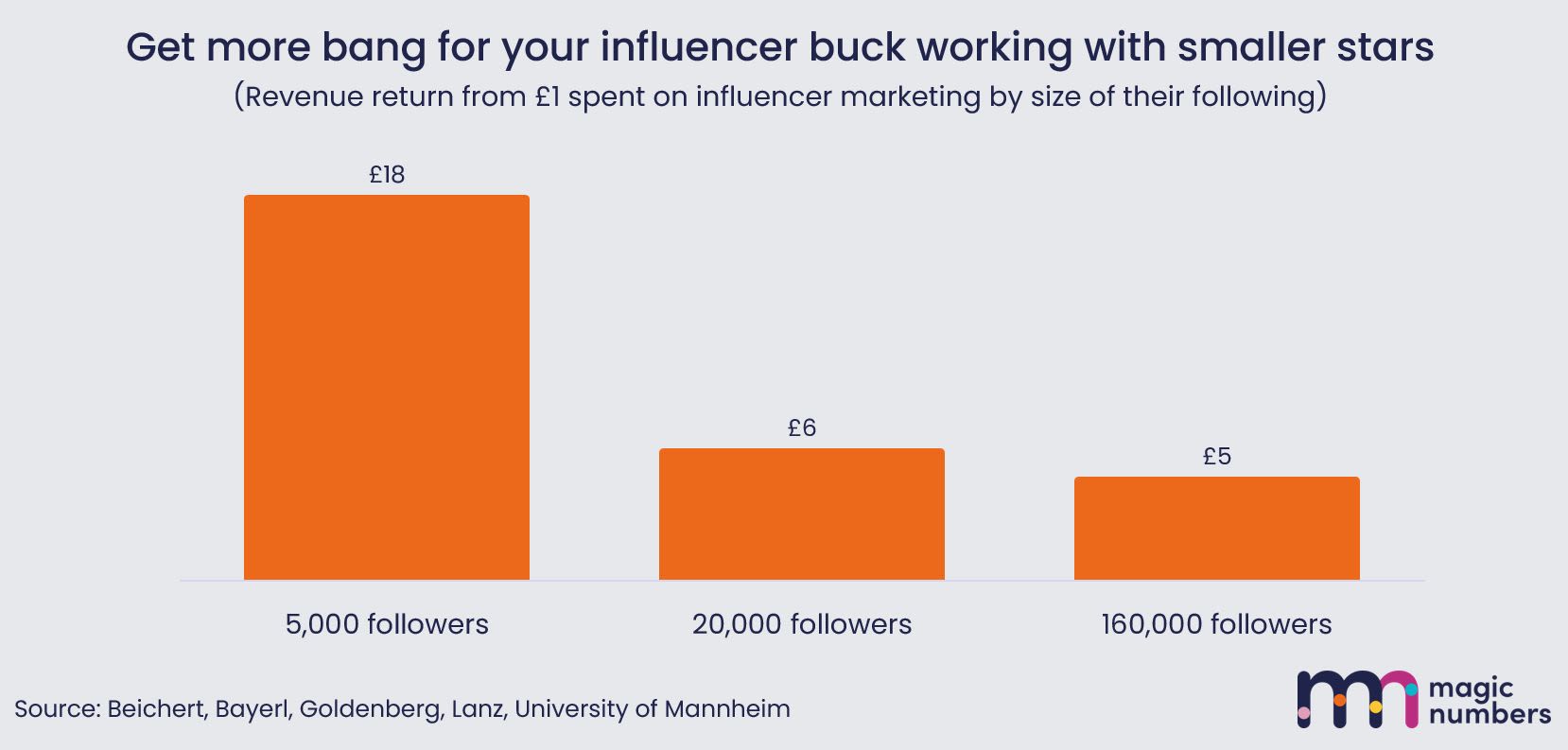Influencer Marketing: A Complete Guide for Performance-Driven Brands
Written by Richard Towey on 17 minute read
Read our ultimate guide to influencer marketing, including details on strategy, cost, influencer types, and the future of the channel.

In the fast-evolving realm of performance marketing, influencer marketing has emerged as a powerful strategy for brands seeking to foster genuine connections with their audience.
As we look toward the future of influencer marketing, understanding the core components, strategies, partner types, monetization methods, and best practices is vital for businesses aiming to succeed with the channel.
In this article, you will learn:
- What is influencer marketing?
- What types of influencers are out there?
- Ways of building an influencer marketing strategy
- How to use influencer marketing platforms to manage and track your activity
- Lessons from brands with successful influencer marketing programs
- Where influencer marketing is heading
We'll also outline how smart brands are lowering the risk of their influencer investments while maximizing their returns with a performance-based approach. Let's get into it.
What is influencer marketing?
Starting with the basics:
Influencer marketing is a strategic approach that leverages individuals with significant social media presence to promote products or services.
When brands think about influencers, they often picture the most influential figures in the world. However, the influencer marketing definition extends beyond mere celebrity endorsements.
These days, you're just as likely to see brands partnering with micro and niche influencers who resonate more authentically with specific audiences.
We've written previously about brands "thinking small" and moving away from partnering with big-name figures in favor of tapping into loyal, tight-knit communities. This reflects changing consumer behaviours, where trust and relatability are essential for brand engagement.
If you're looking for a true influencer marketing definition, it involves collaboration between brands and people of influence whose values align. Successful influencer marketing revolves around a partnership, with each side fulfilling a certain role:
Influencers create engaging content that highlights a brand's offerings across various platforms, enhancing visibility and audience engagement.
Brands offer support and, crucially, pay a fee in return for the promotion. This can be an upfront figure or a recurring commission, based on how well the influencer's content performs.
Key advantages of influencer marketing vs channels like PPC and PR include:
Immersive content
Influencers are known for their video content, which provides their audience (and potentially your future customers) with a closer look at what they’re buying. Take this example from YouTuber ‘Tech Unboxing’. Imagine how your brand and product could benefit from such a detailed breakdown.
Tapping into a young audience
Social platforms like Instagram, TikTok, and YouTube are known for attracting a predominantly younger audience. Crucially, these age groups are perfect for influencer marketing, with 61% millennials trusting recommendations they receive on social platforms. Need to find your next generation of customers? Use influencer marketing.
The viral effect
An influencer post is far more likely to reach a mass audience than most other marketing messages. This is down to engagement feeding the algorithm on platforms like Instagram. The greater your content resonates with the audience, the more they like and share it, and the more reach the algorithm provides.
That’s three advantages, straight off the bat. If we were to pick just one advantage of influencer marketing vs other channels, it would be the trust creators have cultivated with their followers. This translates into impactful endorsements and higher conversion potentials.
Understanding different influencer categories
The realm of influencer marketing is rich with variety, featuring distinct types of influencers, each offering unique advantages for brand promotions.
Here's a short overview of each:
Mega influencers: Over 1 million followers
Mega influencers are typically professional creators, often celebrities, athletes, or major public figures with a following exceeding 1 million.
Works for: Enterprise brands looking for massive exposure, such as global corporations or luxury brands. Typically, mega influencers are recruited individually for single campaigns, rather than featuring as part of a team.
Pros: Extensive reach, which can generate substantial brand awareness.
Cons: High costs for partnerships and potentially lower engagement rates due to their broad audience.
Examples of mega influencers and their rates according to Influencer Marketing Hub include:
- Cristiano Ronaldo, $3.2 million per post
- Kylie Jenner, $2.3 million per post
- Ariana Grande, $2.2 million per post
The high cost to recruit these influencers gives you an idea of the types of brands that can afford to involve them in their campaigns.

Macro influencers: 100,000 - 1 million followers
Macro influencers are professional creators but perhaps not always household names.
Works for: Mid-size or large brands, such as consumer product or lifestyle brands, typically enlisting the help of a small group of macro influencers to engage a sizeable audience.
Pros: A good mix of reach and engagement.
Cons: A less personal connection with followers compared to micro influencers.
Examples of macro influencers and their follower counts include:
- Kiki, travel influencer posting on @theblondeabroad - 500k followers
- Tom Kerridge, chef posting on @cheftomkerridge - 700k followers
- Erica Nicole, fashion guru posting on @ericanic0le - 105k followers
Micro influencers: 1,000 - 100,000 followers
Micro influencers can be anything from a content creator engaging in influencer marketing as a side project to a professional with a reasonably large audience. Despite having a smaller following than mega and macro influencers, they cultivate loyal communities that value their opinions.
Works for: Brands of small to medium size, particularly niche or emerging brands, which frequently collaborate with micro influencers.
Pros: Higher engagement rates and a genuine connection with their audience.
Cons: A more limited reach than macro and mega influencers.
Examples of micro influencers:
- BLU THE, scientist posting on @ayishablu - 24k followers
- Oli Vost, streetwear creator posting on @vostsvault - 24k followers
- Kate O'Phalen, family and travel enthusiast, posting on @kateophalen - 8k followers
Nano influencers: Fewer than 1,000 followers
Nano influencers are typically individuals with a passion for their niche, often engaging in influencer marketing as a side project.
Works for: Nano influencers' close relationships with their audiences and affordable pricing make them appealing to local or small brands.
Pros: High levels of trust and authenticity, which can lead to increased conversions.
Cons: Limited reach and potential challenges in scaling campaigns effectively.
How to select the right influencer
Selecting the appropriate types of influencers is essential for your campaigns. Audience size matters, but you should also be aware of each individual's qualities before entering a partnership, just so you're aware of what to expect.
Check off these three boxes before you start your recruitment:
1. Target audience: Who do you want to target (e.g. age, location, interests), and how specific or broad are you going?
2. Campaign goals: Are you looking for sales, traffic, or brand awareness?
3. Budget: The amount you have to spend will largely dictate the size of influencer you partner with.
If you're looking for a glimpse at the future of influencer marketing, you should be aware of a significant movement that is greatly impacting how brands select their influencers.
As we've previously written, influencer marketing investors have gone from prioritizing partnerships with mega celebrities to "thinking small" by linking up with micro and nano creators. Their reasons: greater authenticity, closer relationships with audiences, and cost-effectiveness.
According to Magic Numbers, influencers with fewer than 5,000 followers prove their worth in the form of an 18:1 ROI. Creators with 20,000 average closer to 6:1, and those with 160,000 or over return 5:1. These figures show that what nano and micro creators lack in reach, they make up in credibility and performance.

The role of influencer marketing platforms
To effectively manage influencer collaborations, businesses increasingly turn to influencer marketing platforms. These provide tools to discover suitable influencers and manage your campaigns. For saving time, improving efficiency, and reducing mistakes, they're invaluable.
Here are some of the key features of an influencer marketing platform:
Partner recruitment
Utilizing influencer platforms allows you to access a vast network of potential partners, making it easier to identify the right fit for your brand.
These platforms enable you to filter influencers based on various criteria. You can narrow your search by looking at audience demographics, specialist subjects, and the platforms they post on.
Additionally, you can consider the size of an influencer's audience to ensure they align with your marketing objectives.
Streamlined communication
Influencer partnerships are unlike many in that you are dealing with an individual, rather than a company. That said, your platform should have some kind of built-in automation or batch communication tools to make it easy to share offers, campaign details, and communicate important updates.
Tracking
Gone are the days when brands would judge their influencer success on a "gut feel".
Influencer platforms typically offer comprehensive analytics, measuring campaign success through metrics like engagement rates, reach, and conversions. This data-driven approach allows brands to refine strategies, optimize their marketing spend, and foster authentic partnerships that resonate with target audiences.
By leveraging an influencer marketing platform, brands can make data-driven decisions, ensuring alignment with campaign goals and audience preferences.
Examples of influencer platforms include:
If you'd like to explore more options, take a look at our top 10 list of influencer platforms.
Building a successful influencer marketing strategy
Crafting an effective influencer marketing strategy might seem daunting on your first time out. But you'd be surprised how easy it is to scale from a basic foundation. Here are four steps you can follow:
-
Set clear goals
Determine what you want to achieve, whether it's increasing brand awareness, driving sales, or boosting engagement. Consider if you are collaborating with influencers to introduce a new product or to elevate your entire brand presence. Typical influencer marketing goals include:
- Increasing share of voice
- Driving sales of a new product
- Boosting brand awareness
These objectives serve as the foundation for your influencer selection and content development.
-
Outline a budget
Once you have established your goals, the next step is to set a budget.
It's easy to get carried away with all the extra traffic and sales you're driving, but it ultimately comes at a cost. Monitoring and sticking to that fixed amount makes it easier to prevent overspending.
Your budget should include not just payments to influencers, but also potential costs for content creation and promotions (e.g. discounts at your store).
While we're talking costs, don't forget that many influencers now work on a pay-on-performance basis via the affiliate channel. We've seen this first-hand at Awin, demonstrated by a +188% increase in influencer sign-ups on our affiliate platform between 2022-2024.
If you have an affiliate program on a platform like Awin, you can recruit, manage and pay your influencers on a cost per acquisition (CPA), only paying for the sales they drive. It's an ideal scenario if you're looking to limit your risk on a first time out.
-
Recruit influencers
After establishing your budget, the third step is to identify suitable influencers. You can either do some research by yourself or use a specialist network like CreatorIQ to find influencers there.
Don't just focus on reach. Here are some good filters to apply when reviewing your options:
- Audience: Does it align with your own?
- Engagement rates: Does the influencer's audience actively engage and interact with them?
- Location: If you operate globally, how many markets can you reach with one influencer?
- Platforms: Which platforms does the influencer post on, and do these align with your goals, messaging, and acquisition plan?
- Style: Consult with your own brand guidelines to see if the influencer is an appropriate ambassador.
-
Work out commercials and acquisition method
Next, you will need to work out the payment structure and commercial terms for the influencers you wish to collaborate with.
Different influencers may have various compensation models, but mostly involve one of these three options:
Free gifts
Have a valuable product, like a holiday or an essential service? You'd be surprised how many influencers accept gifts in exchange for posts. As long as they disclose their promotion as an ad, following guidelines laid out by the likes of the Advertising Standards Authority, gifting is a highly cost-effective influencer play.
Pay on performance
Paying only for the clicks, sales, or revenue you drive is a huge win. Influencers with high engagement and trustworthiness can often earn much more from these commercial arrangements than they can through a flat fee.
For a strong case study, ask boutique eyewear brand Tomahawk Shades, which managed to convince golf's no.1 influencer to enter a sales-based partnership. Its success story is award-winning in the performance marketing space.
Flat fees
Many influencers require an upfront fee to guarantee a certain amount of posts. This is most common with mega and macro influencers with large audiences, as you are virtually guaranteed a high level of awareness. Some use flat fees in a hybrid model, requesting a certain sum for a few posts, with an additional performance-based agreement on top.
Once you've firmed up the commercials, you should devise a strategy for maximizing the effectiveness of their posts. For example, you can share a coupon code for your store (e.g. 'MYBRAND10' for 10% off). This provides an incentive for the influencer's audience to buy with you, while also enabling you to track how many sales they drive.
Code usage in influencer campaigns is up 26% year on year, showing that more brands are keen to see sales from their partnerships.
-
Track and measure
Once you've selected your influencers and provided them with the necessary resources to authentically promote your brand, be sure to set up the right tracking to monitor the campaign's performance.
It’s important have the information to make adjustments as needed. For instance, offering more support to creators who haven't engaged in the campaign and delivering extra resources to those who are generating solid results.
Future trends in influencer marketing
Now you have a solid understanding of how influencer marketing works at present, it's worth taking a look at where it's heading.
Emerging platforms, advanced technologies, and evolving consumer expectations all feature prominently in the future of influencer marketing. Here are some crucial developments to monitor and factor into your influencer marketing strategy:
New platforms
The social platforms that have served marketers so well over the last decade might not be the ones we're talking about in the years ahead. In particular, Facebook's organic reach has dropped to just 1.37%. That means if you engaged with an influencer with 100,000 followers, you would reach just 1,370 people per post.
At the same time, newer platforms are becoming more viable. TikTok, for example, now boasts a global user base of 1.6 billion, powered by its popularity among younger age groups.
That shift offers brands opportunities to connect with new demographics and refine their content creation, incorporating techniques like augmented and virtual reality to produce more immersive experiences.
Tracking developments
Influencer spend is growing, but so too is the demand for measurable outcomes. With 43% of advertisers reporting difficulties measuring creator ROI, something has to give.
It's not just direct investors that are feeling the pressure. Marketing budgets are largely dictated by powers further up the chain, who are now questioning what influencers truly generate.
“The biggest pushback from CFOs boils down to ‘Show me the ROI’. CFOs have become much more pointed in asking how campaigns translate into revenue.”
Nick Tran, CMO, Farfetch
So let's talk solutions. Artificial intelligence and data analytics are becoming integral to influencer marketing, offering insights into influencer selection and campaign efficiency. As technology advances, brands can leverage these tools to create targeted and impactful campaigns that resonate with their audiences.
What's more noticeable is that brands are turning to more performance-based partnerships. Paying on results makes it easier to generate a solid ROI and also measure your return.
The pursuit of authenticity
Consumers increasingly expect transparency and accountability from brands and influencers alike. Disclosing whether the influencer is promoting a brand or product organically (i.e. with or without payment) is key.
Linked to this challenge, brands need to find creators who truly believe in what they promote. Either that, or do they command the right level of respect with their audience to encourage them to take action? Again, prioritizing authenticity and engagement over reach is a huge trend among influencer marketers.
Next steps
If you're looking to set up a future-proofed influencer strategy, why not do it through an affiliate platform like Awin?
You can recruit, manage, and track your influencers in one place. Plus, with many of their creators operating on a CPA basis, you can test the waters with a performance-based partnership and only pay for the results you drive.
Reach out to us today and let's assess what a performance-driven influencer partnership can do for you.

